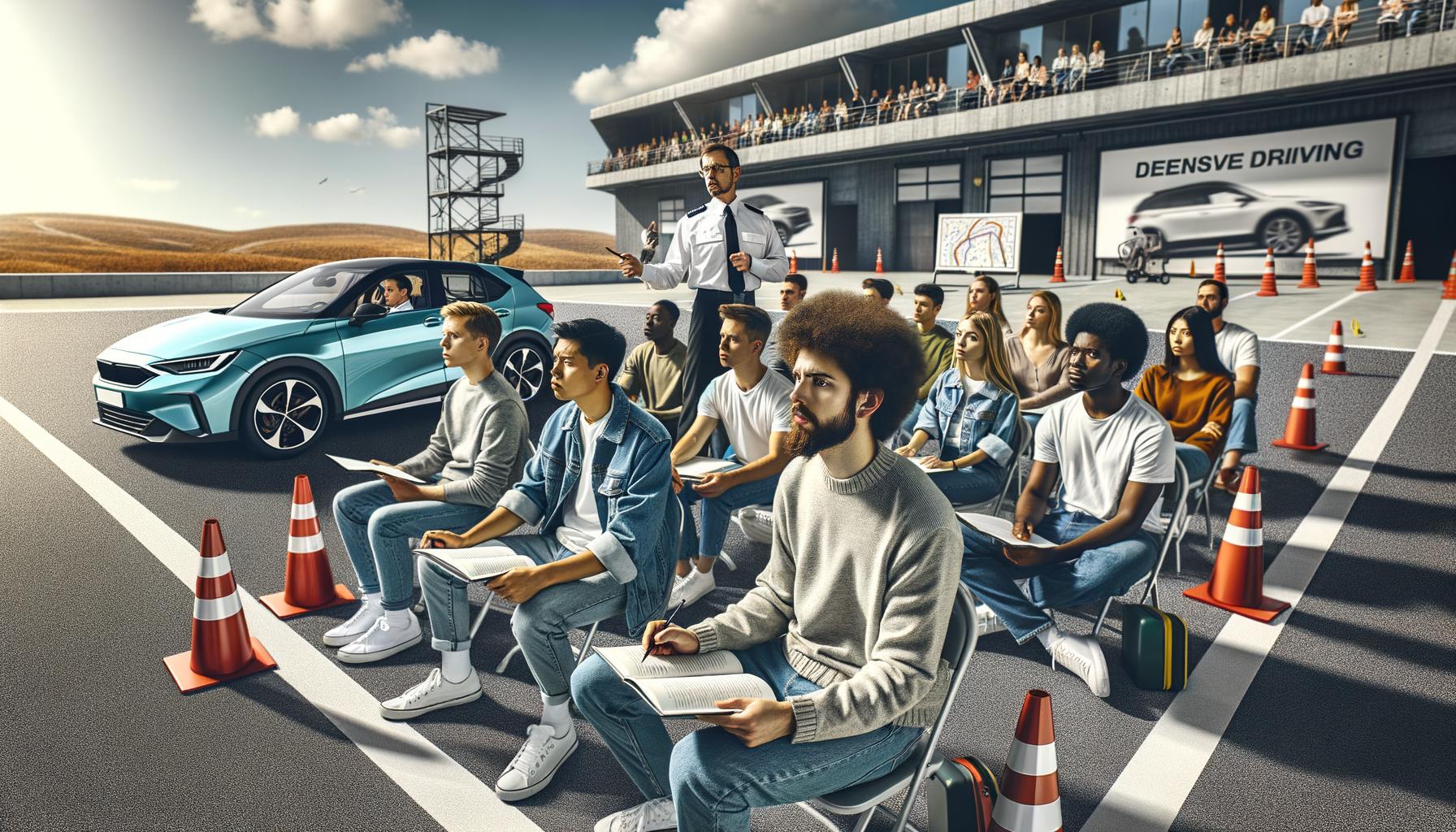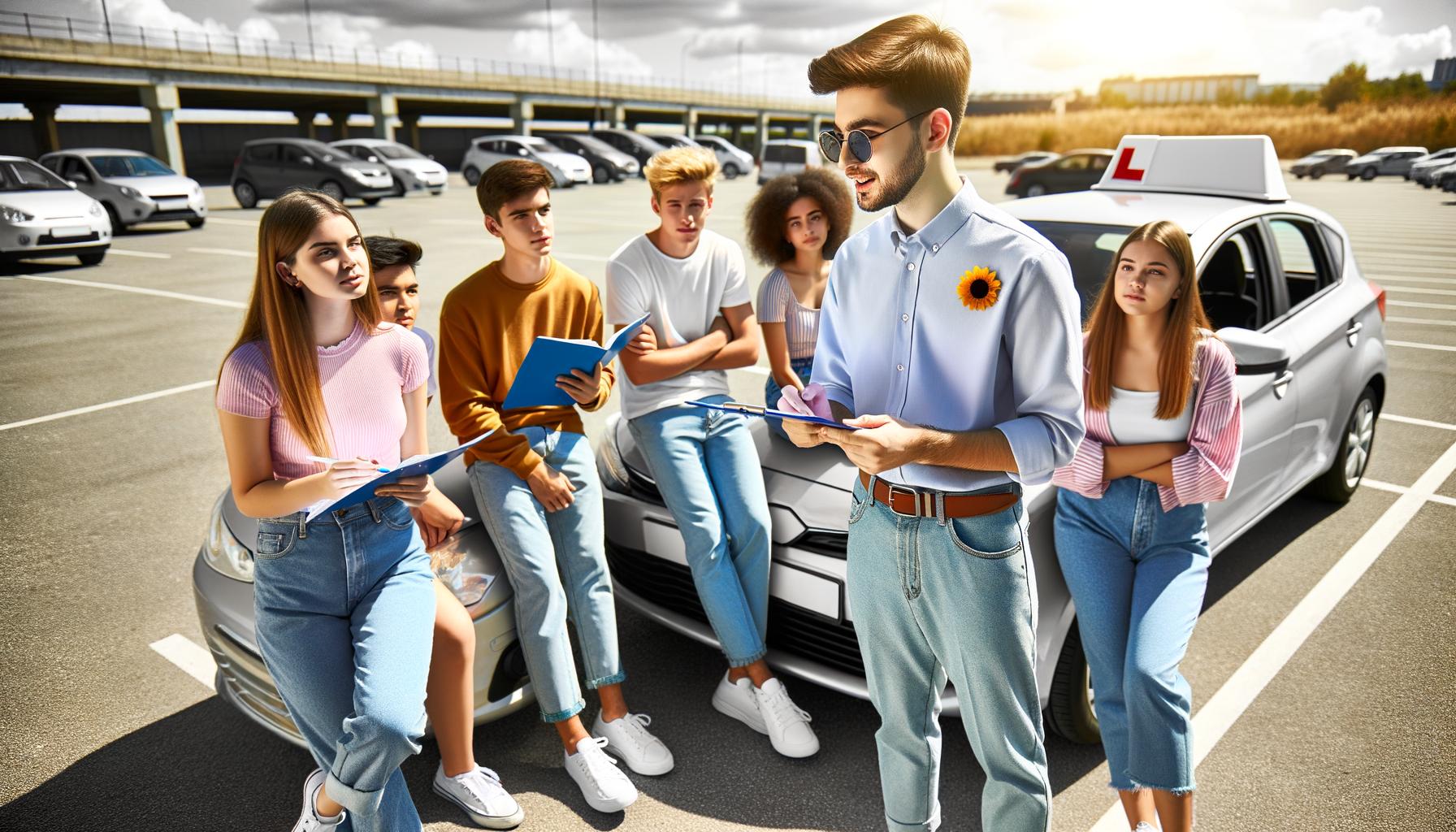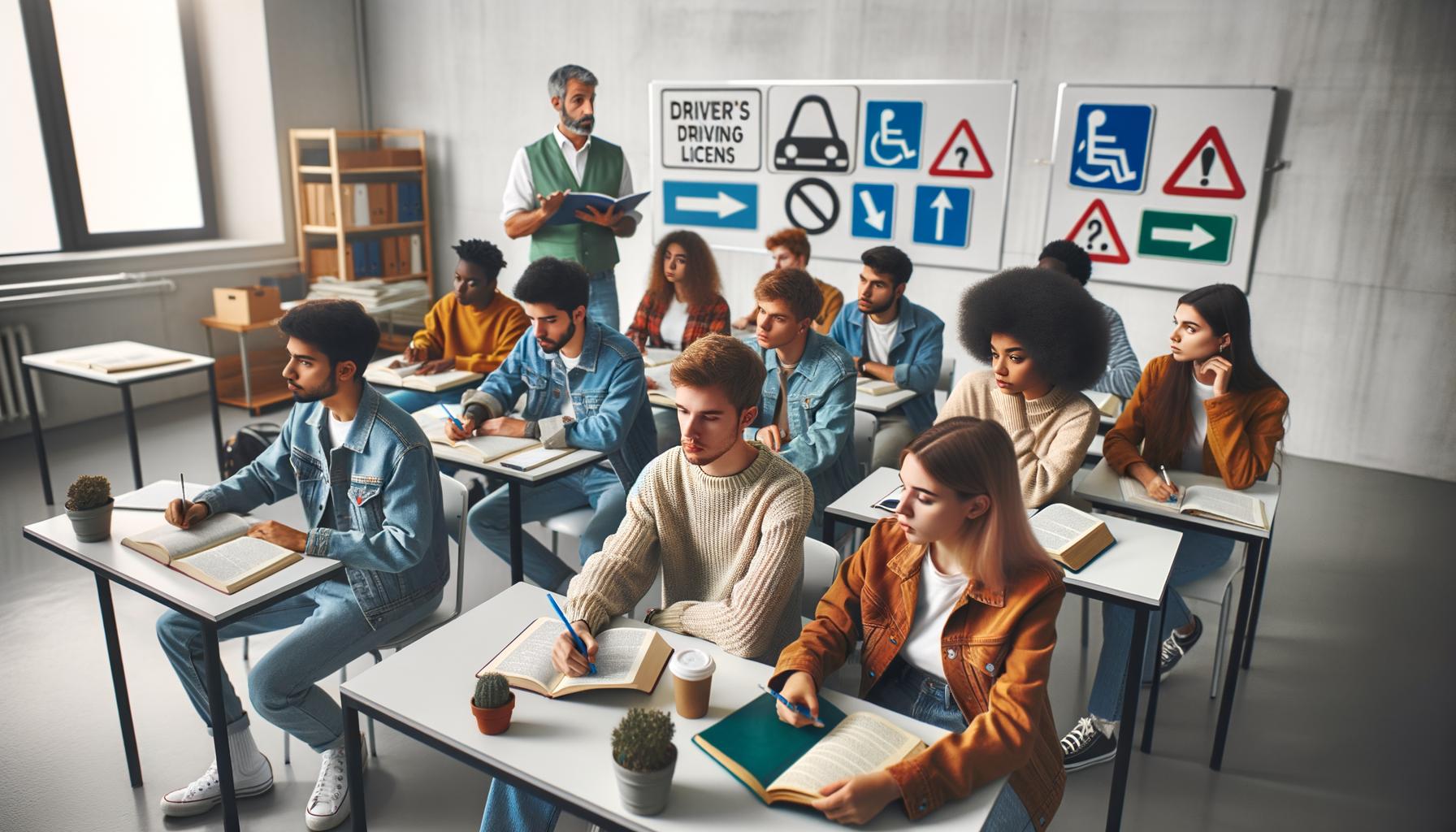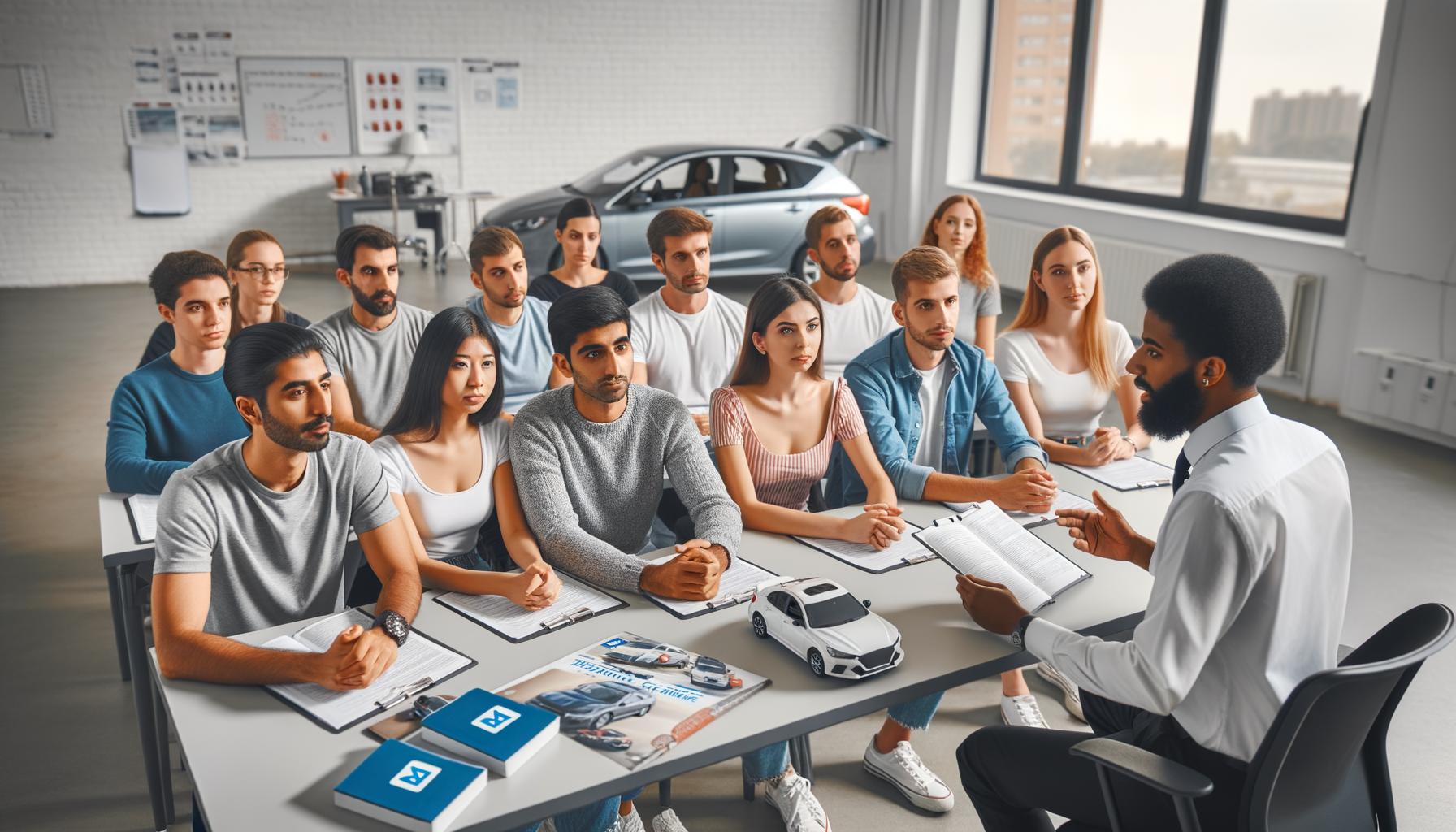Learning to Drive on the Left Side: A Beginner’s Guide
At The Wiser Driver Driving School, we understand the challenges of learning to drive on the left side of the road. This skill is essential for travelers and expats in many countries around the world.
Our comprehensive guide will help you navigate the unique aspects of left-side driving, from basic rules to advanced techniques. Whether you’re planning a trip or moving to a left-driving country, we’ll equip you with the knowledge and confidence to hit the road safely.
Where Do People Drive on the Left?
The Global Left-Side Driving Landscape
At The Wiser Driver Driving School, we often receive questions about left-side driving. This skill applies to more countries than many people realize. Around 57 countries drive on the left side of the road, including popular destinations like the United Kingdom, Australia, Japan, and India.

The World Health Organization reports that about 30% of the global population drives on the left side. This translates to roughly 75 countries worldwide. Interestingly, studies indicate that countries with left-side driving tend to have lower rates of road fatalities compared to right-driving nations.
Key Differences in Left-Side Driving
Left-side driving involves more than just switching sides of the road. In these countries, the driver’s seat typically sits on the right side of the vehicle. This change affects everything from your field of vision to how you navigate intersections.
One significant adjustment involves the passing lane. In left-driving countries, faster traffic uses the right lane to pass, which can challenge drivers accustomed to right-side systems. We recommend using the phrase “left to left” when approaching intersections to reinforce correct positioning.
Common Challenges for New Left-Side Drivers
New left-side drivers often struggle with spatial awareness. The change in perspective can make it difficult to judge distances, especially when parking or navigating narrow roads. Many drivers report feeling closer to the center line than they actually are.
Turning at intersections presents another frequent issue. Right turns become more challenging, as you cross traffic. It’s essential to look both ways and yield appropriately. Left turns, while easier, still require caution as your positioning will feel different.
Roundabouts can also confuse newcomers to left-side driving. In these situations, traffic flows counterclockwise (the opposite of what right-side drivers expect). Always yield to vehicles already in the roundabout and exit to the left.
Adapting to the New System
Adjusting to left-side driving takes time and practice. On average, drivers need about 10 hours of practice to become comfortable with the new system (based on learner driver statistics from published studies). However, individual experiences may vary, and it’s important to proceed slowly and maintain focus while adjusting.
As you prepare to tackle the challenges of left-side driving, consider the essential tips and safety precautions that can make your transition smoother. In the next section, we’ll explore practical strategies to help you adjust quickly and safely to this new driving environment.
How to Master Left-Side Driving
At The Wiser Driver Driving School, we help drivers transition to left-side driving. Our experience shows that mastering this skill requires practical techniques and mental preparation. Here’s how you can adapt to driving on the left side of the road.
Familiarize Yourself with the Vehicle
Start by spending time in the parked car. Adjust your seat, mirrors, and steering wheel to ensure optimal visibility and comfort. Practice reaching for controls like the gear shift, turn signals, and windshield wipers without looking. This muscle memory will prove invaluable when you’re on the road.

Many students find it helpful to use an automatic transmission vehicle when first adjusting to left-side driving. This eliminates the need to shift gears with your left hand, allowing you to focus solely on road positioning and navigation.
Master Proper Lane Positioning
When you first hit the road, drive slower than usual. This gives you time to process your new position and react to unfamiliar situations. Stay close to the left side of your lane, using the road’s center line as a guide. If you feel too close to oncoming traffic, you’re probably in the correct position.
A useful trick is to align yourself with the vehicle in front of you. This helps maintain proper lane position, especially when turning or changing lanes.
Navigate Roundabouts and Intersections
Roundabouts often cause the most anxiety for new left-side drivers. Always enter a roundabout by turning left and yielding to traffic already in the circle. Traffic flows clockwise in left-driving countries.
At intersections, take extra care when turning right, as you’ll cross lanes of traffic. Look right, then left, then right again before proceeding. When turning left, stay close to the left side of the road you’re entering.
Train Your Eyes and Mind
One of the biggest challenges in left-side driving is overcoming ingrained habits. Train yourself to look right first when crossing streets or entering intersections. This simple act can prevent many potential accidents.
We recommend placing a small sticker on the dashboard as a visual reminder to stay left. Some drivers use phrases like “stay left, stay safe” as a mental mantra while driving.
Practice Makes Perfect
Start in areas with light traffic and gradually work your way up to busier roads. Many drivers find that it takes practice to feel comfortable with left-side driving.
Patience is key. Even experienced drivers need time to adjust to left-side driving. Following these tips and staying focused will help you navigate left-side roads with confidence. As you continue to practice and improve your left-side driving skills, it’s important to consider additional safety precautions that can further enhance your experience on the road.
How to Stay Safe While Driving on the Left
Heighten Your Awareness
Driving on the left demands constant vigilance. Move your eyes regularly, check your mirrors and blind spots often. Pay extra attention to road signs and markings, as they may differ from what you know. A study on driver inattention found that with only 21 crashes recorded, the role of inattention on driver crash risk could not be reliably determined.
Use Technology Wisely
GPS navigation systems prove invaluable when driving in unfamiliar territory. However, don’t trust them blindly. Set up your GPS before you start driving and use voice guidance to avoid looking at the screen while moving.
Combat Fatigue Proactively
Left-side driving can tax your mind, especially for beginners. Take regular breaks to avoid fatigue and confusion. During these breaks, stretch your legs, drink water, and refocus your mind.
Adopt a Defensive Driving Mindset
Anticipate other drivers’ actions and prepare to react. Keep a safe following distance – at least a three-second gap between you and the vehicle in front. This gives you more time to react to sudden traffic changes. The National Safety Council offers defensive driving courses that deliver relevant content to train drivers to avoid collisions, crashes, injuries or worse.
Practice in Low-Traffic Areas
Start your left-side driving experience in areas with minimal traffic. This allows you to focus on your positioning and road rules without the added stress of heavy traffic. Try to find quiet residential areas or empty parking lots (during off-hours) to practice basic maneuvers. As you gain confidence, gradually move to busier roads. Stay focused on the road at all times to ensure safety.

Final Thoughts
Mastering left-side driving requires dedication, practice, and patience. You must understand the basics, adapt to key differences, and implement safety measures to become a confident left-side driver. The transition takes time, so start slowly, practice in low-traffic areas, and gradually build your confidence.

Safety should always be your top priority when you learn how to drive on the left side. Maintain awareness, use navigation tools wisely, and adopt a defensive driving mindset. These practices will keep you safe and contribute to a positive driving experience.
At The Wiser Driver Driving School, we help drivers of all ages and skill levels enhance their driving abilities. Our programs (including personalized driving lessons) are designed to boost your confidence and equip you to handle various driving situations. Stay focused, remain patient, and always prioritize safety as you navigate left-side roads.
















































